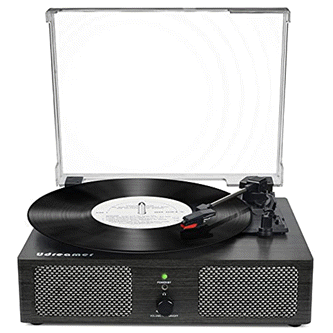2025-05-21 15:40:00
phys.org

Laser frequency combs are light sources that produce evenly spaced, sharp lines across the spectrum, resembling the teeth of a comb. They serve as precise rulers for measuring time and frequency, and have become essential tools in applications such as lidar, high-speed optical communications, and space navigation. Traditional frequency combs rely on large, lab-based lasers. However, recent advancements have led to the development of chip-scale soliton microcombs, which generate ultrashort pulses of light within microresonators.
One of the key challenges for soliton microcombs is timing jitter, which refers to tiny fluctuations in the timing of their light pulses. These fluctuations, caused by environmental noise or internal instabilities, can degrade the precision and reliability of systems that rely on exact timing. For example, in lidar, jitter can cause uncertainty in distance measurements, and in high-speed data transmission, it can introduce signal distortion and reduce data integrity.
As reported in Advanced Photonics Nexus , an international research team has addressed this problem by developing a new platform based on dispersion-managed (DM) silicon nitride (Si3N4) microresonators operating at an 89 GHz repetition rate.
A key improvement of the DM platform is its ability to reduce avoided mode crossings (AMX), which are typically hard to control in traditional constant-dispersion setups. By shaping the dispersion within the resonator, the research team was able to suppress these disruptions and obtain a more stable signal.
To build the microresonator, the researchers deposited a 3-µm layer of silicon dioxide (SiO2) on a silicon wafer. They then deposited an 800-nm layer of Si3N4 using low-pressure chemical vapor deposition. This layer was then patterned into a ring resonator through 248-nanometer deep-ultraviolet lithography. Finally, an oxide layer was added to the patterned microresonator.
The team tested microcombs in different operating states, including single-soliton, multiple-soliton, and soliton crystal formations. Using a high-sensitivity interferometry method, they measured timing jitter down to the zeptosecond range. The results showed that the single-soliton state consistently produced the cleanest signal, with a relative intensity noise (RIN) of −153.2 dB/Hz, and a timing jitter as low as 1.7 femtoseconds for frequency ranges between 10 kHz to 1 MHz. For a broader frequency range, from 10 kHz to the Nyquist limit of 44.5 GHz, the integrated jitter remained as low as 32.3 fs.
The DM design also stabilized the center frequency of the microcombs, helping to avoid additional jitter caused by frequency drift. While jitter levels varied slightly between soliton states, performance remained exceptionally stable overall.
“To the best of our knowledge, we achieved femtosecond timing jitter for the first time in dispersion-managed microcombs,” says corresponding author Wenzheng Liu.
The researchers also identified the main source of low-frequency noise as intracavity power fluctuations—a finding that opens the door to future improvements, where timing jitter could potentially be reduced to sub-femtosecond levels.
“The primary noise source at low-offset frequencies is the fluctuation in effective cavity length, which arises from intracavity power fluctuations in the microresonator. In dispersion managed microcombs, we observe negligible center frequency shifts, which helps to prevent noise conversion processes related to center frequency shifts. Future studies could explore how high-order dispersion in these microresonators facilitates additional noise coupling mechanisms,” notes author Chee Wei Wong, a professor at UCLA Samueli School of Engineering.
By achieving femtosecond-level timing jitter in a compact, integrated platform, the proposed dispersion-managed microcomb sets a new benchmark. These insights open new possibilities for the deployment of chip-scale solitons in space navigation, ultrafast data networks, and quantum measurement systems.
More information:
Wenting Wang et al, Mapping ultrafast timing jitter in dispersion-managed 89 GHz frequency microcombs via self-heterodyne linear interferometry, Advanced Photonics Nexus (2025). DOI: 10.1117/1.APN.4.3.036011
Citation:
Chip-scale soliton microcombs reach femtosecond precision (2025, May 21)
retrieved 22 May 2025
from https://phys.org/news/2025-05-chip-scale-soliton-microcombs-femtosecond.html
This document is subject to copyright. Apart from any fair dealing for the purpose of private study or research, no
part may be reproduced without the written permission. The content is provided for information purposes only.
Enjoy the perfect blend of retro charm and modern convenience with the Udreamer Vinyl Record Player. With 9,041 ratings, a 4.3/5-star average, and 400+ units sold in the past month, this player is a fan favorite, available now for just $39.99.
The record player features built-in stereo speakers that deliver retro-style sound while also offering modern functionality. Pair it with your phone via Bluetooth to wirelessly listen to your favorite tracks. Udreamer also provides 24-hour one-on-one service for customer support, ensuring your satisfaction.
Don’t miss out—get yours today for only $39.99 at Amazon!
Help Power Techcratic’s Future – Scan To Support
If Techcratic’s content and insights have helped you, consider giving back by supporting the platform with crypto. Every contribution makes a difference, whether it’s for high-quality content, server maintenance, or future updates. Techcratic is constantly evolving, and your support helps drive that progress.
As a solo operator who wears all the hats, creating content, managing the tech, and running the site, your support allows me to stay focused on delivering valuable resources. Your support keeps everything running smoothly and enables me to continue creating the content you love. I’m deeply grateful for your support, it truly means the world to me! Thank you!
|
BITCOIN
bc1qlszw7elx2qahjwvaryh0tkgg8y68enw30gpvge Scan the QR code with your crypto wallet app |
|
DOGECOIN
D64GwvvYQxFXYyan3oQCrmWfidf6T3JpBA Scan the QR code with your crypto wallet app |
|
ETHEREUM
0xe9BC980DF3d985730dA827996B43E4A62CCBAA7a Scan the QR code with your crypto wallet app |
Please read the Privacy and Security Disclaimer on how Techcratic handles your support.
Disclaimer: As an Amazon Associate, Techcratic may earn from qualifying purchases.









































































































